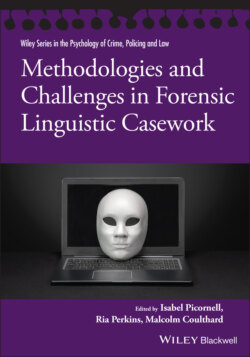Читать книгу Methodologies and Challenges in Forensic Linguistic Casework - Группа авторов - Страница 32
FURTHER READING
Оглавление1 Argamon, S. (2018). Computational forensic authorship analysis: Promises and pitfalls. Language and Law/Linguagem e Direito, 5(2), 7–37.
2 Dror, I.E., Peron, A. E., Hind, S. L., & Charlton, D. (2005). When emotions get the better of us: the effect of contextual top-down processing on matching fingerprints. Applied Cognitive Psychology, 19(6), 799–809.
3 Grant, T. (2020). Text messaging forensics: Txt 4n6: Idiolect free authorship analysis? In M. Coulthard, A. May, & R. Sousa-Silva (eds.), The Routledge Handbook of Forensic Linguistics. (2nd ed.). Routledge.
4 Grant, T. (2012). TXT 4N6: method, consistency, and distinctiveness in the analysis of SMS text messages. Journal of Law & Policy, 21, 467.
5 Grant, T. (2021). The idea of progress in forensic authorship analysis. Cambridge University Press.
6 Grieve, J., & Woodfield, H. (2020). Investigative linguistics. In M. Coulthard, A. May, & R. Sousa-Silva (eds.), The Routledge Handbook of Forensic Linguistics (2nd ed.). Routledge.
